“If you truly love nature, you will find beauty everywhere.” Vincent van Gogh
Let’s take a closer look at Vincent van Gogh’s Irises. A beautiful display of shape and color with an illustrator-like feel. I’ll cover:
- Key Facts and Ideas
- Shape, Line, and Composition
- Color
- Value
- Brushwork
- Key Takeaways
- Additional Resources
- Want to Learn More?
- Thanks for Reading!

Key Facts and Ideas
For a painting simply of flowers, there’s a lot of meaningful history behind it. Here are some key facts and ideas:
- Van Gogh painted Irises in 1889 during his stay at the Saint-Paul asylum. This was a tragic yet prolific time for van Gogh. He painted over 100 other works, including The Starry Night. He died shortly after in 1890.
- He wrote to his brother Theo about the painting in May 1889. You can read that letter here. Theo later submitted Irises to the exhibition of the Société des Artistes Indépendants. See the below extract from Theo’s letter.
“Now I still have to tell you that the exhibition of the Independents is open, and that your two pictures are there, the “Irises” and “The Starlit Night.” The latter is hung badly, for one cannot put oneself at a sufficient distance, as the room is very narrow, but the other one makes an extremely good showing. They have put it on the narrow wall of the room, and it strikes the eye from afar. It is a beautiful study full of air and life.” Theo van Gogh, Letter to Vincent, September 1889
- It was one of four paintings of irises. Below are the others.



- It’s ranked as one of the most expensive paintings ever sold. Ironic, considering van Gogh spent most of his life in poverty and turmoil. That’s the chaos and harmony of life. It’s currently owned by the J. Paul Getty Museum.
Shape, Line, and Composition
Shape is a key feature of the painting. Van Gogh went so far as to outline many of them with dark blue, giving an illustrator-like feel. He was likely influenced by Japanese ukiyo-e woodblock prints which he collected in Paris.
There’s a pleasant contrast between the wonderful organic shapes used for the flowers and the flowing, S-like shapes used for the leaves. See the image below.

Van Gogh was brilliant at simplifying complex scenes into these basic artistic elements. That’s why his paintings are so popular. He was able to distill all life’s complexity, turmoil, and overwhelming detail into beautiful works of art. But don’t confuse simple with easy. It’s easy to add more complexity to a painting. It’s incredibly difficult to reduce complexity without compromising the painting’s essence.
The background is relatively busy compared to most paintings. This draws your attention away from the main flowers, but it plays well into the idea of nature’s vastness.
Color
It’s a colorful painting, as you would expect from van Gogh. But it’s not garish or overdone. All the colors work in natural harmony.
There’s a pleasant balance between warm and cool colors. Warm being the reds, oranges, and yellows in the foreground and background. Cool being the pale greens and rich blues of the irises. There are also two pairs of complementary colors: orange and blue; red and green. Complementary colors oppose each other on the color wheel and have a striking contrast when paired. Typically, you would build a painting around one pair of complementary colors, with one dominant color and one supporting color. Balancing two pairs of complementary colors is no easy task. Do it poorly and you might end up with a garish mess of color.
Van Gogh made clever use of bright accents throughout the painting. Notice the yellow dabs in the rich blue flowers; and the yellow and orange flowers scattered throughout the background.

Colorful accents like this work because they appear both balanced and interesting. Balanced in that a small area of bright color can pack the same punch as a large quiet area. Interesting in that they help our eyes jump around the painting.
There are several color groupings: the red ground, the pale green plants, the rich blue flowers, and the warm background. This is a form of simplification. It gives the otherwise busy scene a sense of organization.
Value
The painting doesn’t have a strong value structure. There’s hardly any rendering of light and shadow, I struggle to see any cast shadows, and I couldn’t tell you where light is coming from.
Does it matter in this painting? Not really, as van Gogh focused more on color and shape.
Here’s the painting in grayscale:

A few observations:
- Apart from the white blossom and a few dark accents, the painting is compressed around the middle-value range.
- The dark accents help outline the major shapes.
- It’s interesting to see how much the white blossom stands out in the grayscale. But in the full-color painting, it’s muted by the rich surrounding colors.
- The background can almost be split in half: a dark half on the left and a light half on the right. This adds depth to the painting, as the light half suggests more distance. This also creates a very subtle pattern of light subject against dark background; dark subject against light background. See my image below.

In Photoshop, I created a three-value notan of the painting (see below). This is what the painting looks like if you were to paint it with just black, gray, and white. It’s not a strong or concise design, with values scattered all over the place. I’m showing you this to demonstrate that, whilst value is important, it’s not the be-all-end-all in painting. That’s provided you make good use of the other artistic elements, as van Gogh did with color and shape.

For comparison, here’s a notan of Caravaggio’s Basket of Fruit. The subject is clear even with only two values. This is a strong and concise notan design.
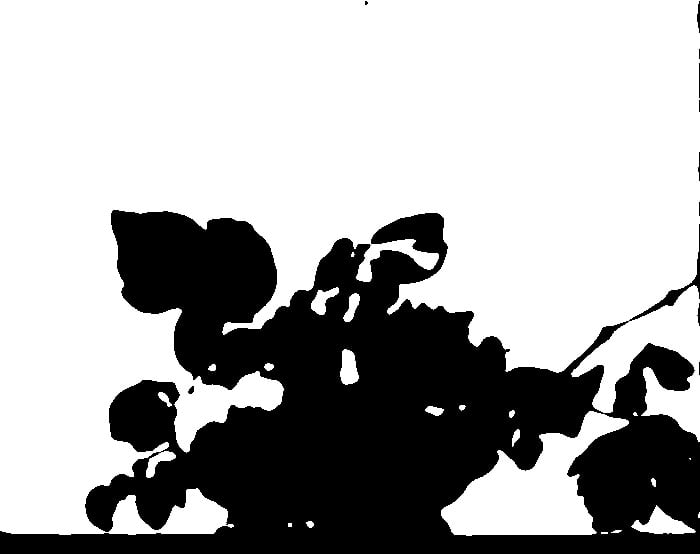
Brushwork
Van Gogh’s brushwork seems bold yet careful. I imagine he painted with intense focus and a large, fully-loaded brush.
Notice how his brushwork follows nature’s contours. This reiterates the sense of form and injects a sense of movement. The ground in particular is full of life.
Tip: You can use brushwork and texture to create interest in otherwise bland areas (a clear blue sky, the wall of a building, or in this case, soil and rocks).
Below are some close-ups of his brushwork. The Getty Museum also has an incredibly high-resolution version of the painting here.



Key Takeaways
Here are some of the key takeaways from this post:
- Look to nature if you’re lacking inspiration.
- For every bit of life’s chaos, there’s beauty and harmony. Van Gogh produced some of his most stunning works during his most troubled times.
- For many, painting is much more than creating things that are easy on the eye. Van Gogh sought sanity in painting. He lived to paint.
- The art world can be cruel. Van Gogh lived in poverty, yet his Irises now ranks as one of the most expensive paintings of all time.
I’ll finish with this: A simple painting can have a profound impact on others. Van Gogh had no idea about the impact his simple painting of flowers would have on the world. For artist Erin Hanson, it was the spark of her painting career (see her quote below). Who knows how many others van Gogh has influenced in the same way.
“This (Irises) was the painting that made me want to become an impressionist oil painter, at age 7. I started taking oil painting classes soon afterwards.” Erin Hanson
Additional Resources
A Closer Look at The Starry Night by Vincent van Gogh
A Closer Look at Bedroom in Arles by Vincent Van Gogh
Want to Learn More?
You might be interested in my Painting Academy course. I’ll walk you through the time-tested fundamentals of painting. It’s perfect for absolute beginner to intermediate painters.
Thanks for Reading!
I appreciate you taking the time to read this post and I hope you found it helpful. Feel free to share it with friends.
Happy painting!
Dan Scott

Draw Paint Academy

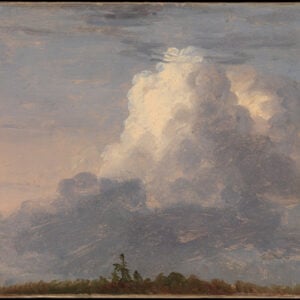
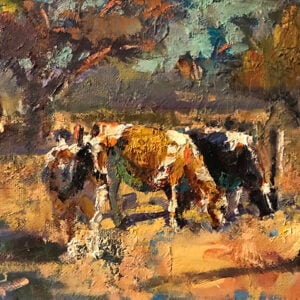
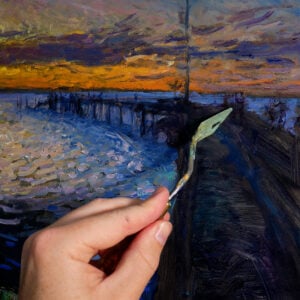
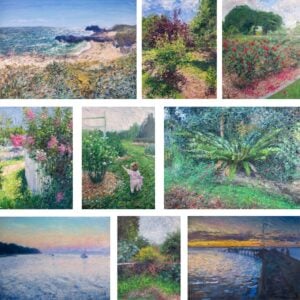
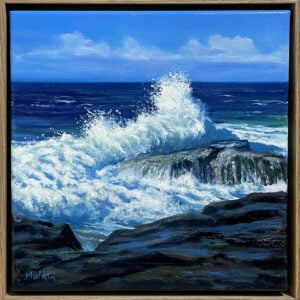
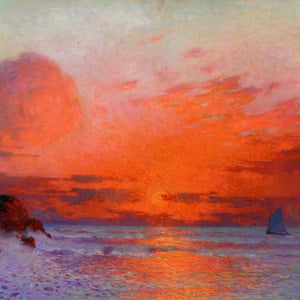
Hi, Very interesting insight. He is my favourite Artist and I love his colours.His soul is reflected in all of his art work.
Hi Dan!
Thank you so much for this post! Incredibly nice and really inspiring!
Huge hugs
Artist Olga Begisheva K
http://www.obkart.com
thank you for your insights.
I appreciate your commentary on Vincent’s wonderful painting, Irises. You have helped me analyze and evaluate color, value and composition. He was one with nature.
Hi Dan
Thank you so much for your very helpful insights!
It is not clear in a copy of this painting but one interesting fact is that the stem on the right originally went all the way to the bottom. He then realised that it split the painting in two, so he overpaint it with more flowers.
Thank you for your info on Irises. Very helpful.
Robyn
Good afternoon Dan
What an inspirational and highly informative post. Thank you for this ! It has made my day
Jacquie Tarr
( in Namibia)
Thank you Dan for this lively, informative commentary. I’ve recently embraced my longtime desire to paint and your insights help me understand the “why” and “how” of what makes art so special and beautiful.
Thank you Dan. Your insights always inspire me to carry on painting. And, I do like irises!
Thanks Dan for beautifully describing Van Gogh simple yet powerful creation.How he used various elements of art and played wid Principles and composition to render a masterpiece.I am a watercolorist who is studying,learning ,practicing Art to better myself as an artist. I like ur artistic analysis.
Always a delight to read your thoughts and observations, and of course see the beautiful artwork you feature.
Thankyou for this post, I love the work and it always helps to have a painting broken down like this to identify why it is successful for my own work
A beautiful description and celebration of Vincent’s Irises. Tomorrow being World Mental Health Day, it shows that in poverty, brokenness, stigmatization and personal battles, surrendering to the creative process can sometimes be our greatest recourse.
That is such a apt view thank you
Wow!! I really appreciate these lessons and am learning so much. I can now recognize a famous painter by his painting. I have no background in art!
Thank you for your inspiration and collective knowledge on these paintings. Although,I’m not an artist Im a life long learner.I love learning about the greats especially the painting details you’ve outlined in your articles.Im hoping to dabble in some of these techniques this Fall.
Great, Informative and Inspirational article. Thank you.
I really appreciated this review of this Van Gogh painting. These ideas have inspired my own floral painting. Thank you!
Dan, Van Gogh is one of my favourite artist, Tom Thomson is next. Your analysis was so clear and simplified. Value and the dark blue outline I will take away as new information. What… there is no light source I thought to myself! The dissecting of lines and then doing the notans was so helpful. I appreciate your study and I’ve learned more about Van Gogh and why I love he’s works so much.
Thank you
I learn so much from your deep, thorough analyses of paintings! I read every word and examine every image. I so appreciate the time you invest in educating us!
Thanks for the mechanics of this painting. Such a wonderful talent. This sometimes tortured soul gave amazing detailed beauty. I very much enjoyed his letters. VG’s work has always been a favorite. His color details are beautiful.
Thank you for your insights on the Van Gogh Iris. Iris is and always will be my favourite subject to paint. Partly because of the beautiful and haunting Van Gogh paintings and in part because they have always been my favourite flower. Thanks again.
Madeleine L’Engle talks about chaos, order, beauty and art in her book “Walking on Water”; an essay on what is art. This author views the prime tasks of an artist: to listen, to remain aware, and to respond to creation through one’s own art echoing your comments here Dan. Well worth reading the Newberry award-winning author whose book “A Wrinkle in Time”has been made into a movie. https://en.wikipedia.org/wiki/Madeleine_L%27Engle
Thank you so much for this
I love this painting and now I love it more! Thank you!
Thank you for sharing Dan. His letters really grip me.
Thank you for your insight and comments,Dan. I have a starry night that I painted in a class two or three years ago. You can see it at artbypatricia.net It was a fun painting to do. I love his Irises. And information you provided really enhanced my views of the paintings. Thank you.
Thanks, again, Dan.
Besides strong warms and cools and the spontaneous contrasts is Van Gough’s lights and darks so closely together. What amazes me still is his struggle with sanity and how you described ” the chaos of beauty and harmony in his Irises”.
Bob Durocher
Dan
An excellent post .
Thank you for your insight and explanation of Van Gogh’s painting.
So inspiring. I am happy to have found your site quite by accident!
Barbara
Never would’ve thought to analyze this painting. He’s a curious genius and broke all the rules when he painted. Thank you I learn so much from your comments.
enjoy the input. I have always been a fan of Vincent’s work. Thank you for sharing.
Thank you so much love these dicourses and you do them so well
I love Van Gogh and Iris is one of my favorites.I appreciate it even more Thank you
Dan,
Thank you for your emails! I learn so much. You are very generous with your time and knowledge. I’m not ready to start painting again quite yet, soon I hope!
Your observations were interesting to me sort of “after the fact”—meaning, that a few years ago I did a “composite copy” for my granddaughter from portions of The Irises from the Getty Museum’s on-line Original. (Evidently I did not save a copy of my interpretation, as I intended to include a copy of it with this reply. My picture was 24 X12 of the diagonal lower purple irises pointing toward the tall white iris.) First, I was struck with Van Gogh’s drawing skill, since my husband and I grew irises for a long time; second, his since of rhythm among the irises and their leaves; and, how he used outline. The hardest part to me was the background behind the white iris. There is so much variety in greens! Did you notice the blue-green outline of an iris behind the right side of the white Iris? I love the posts of yours.
Thank you for the writing on Vincent…and yes it’s valuable to look at the masters…so your insight is so refreshing.
Dan Thank you for sharing. That was interesting educational reading. I like Van Goghs style. It makes a good excerise to follow
Dan Thank you for sharing. That was interesting educational reading. I like Van Goghs style. It makes a good excerise to follow.
Thanks for posting this, I love Van Goghs work and story.
Very valuable information. As usual you always talk about something so interesting and make us understand with your great examples. Thank you so much for sharing your gift with all is us.
As a child I was more attracted towards Rembrandt, Da Vinci ,Titian, Michelangelo.
Until recently, I rediscovered VanGogh. His paintings speak to me, like never before. I can associate myself more with his struggles. There is harmony amongst chaos, rhythms in every brushstroke. Artists are ahead of their time.
Thank you for all the great information that you’ve been sharing. Really appreciate it. In fact, I owe you big time!
THANK YOU FOR YOUR KIND GENEROUSITY in posting all this wonderful information. I especially liked the letter and insight you bring to his work.
Thanks for posting this it is very informative. Had the opportunity to visit the Van Gogh museum in Amsterdam few years back . The information has helped me to take a much in-depth look in seeing His works. Thank you once again
Great article. Thank you, Dan. Van Gogh is my favorite artist.
Vincent van Gogh is a favorite, his time was too short, but what he packed into it!
A great article about a beautiful painting by one of the greatest artists in history !!
Than you.
Thanks for sharing your insights on great painters. It’s so helpful to hear others thoughts.
He brought out the simple beautuful things that God has given us. Makes you appreciate a walk through a garden more.
Very in-depth. Now I have even more appreciation of the “Irises”.
Thank you!
An excellent piece of research. A Van Gogh travelling exhibition got me interested in art back in the early 50’s and I am off to see the VanGogh live this week.
I am 84 and want to paint with more enjoyment. I tend to go to detail which takes me forever. I started drawing and painting in High School and have only structured classes when my last child went to high school giving me the free mornings. I spent five years at our junior college taking any and all drawing, painting, and sculpting. I loved every minutes. Then life moves forward and we lived in Sedona, Az for 14 years. Where we enjoyed hiking and traveling out of the country always with my camera in my hand. We are retired and spent the first 8 years giving back for all the blessing few have by volunteering at the food bank and found a Marine trying to pack boxes of their needs and drop shipping to the camp sites that have emailed their needs and prayers. I retired from most of our volunteer projects. Since I found your generous offer of a weekly course that I have saved and enjoying your input and artistic eye dissecting paintings by a variety of artists and of course our Masters.
Thank you from the bottom of my heart for you experience and generosity to share. I am now very ready to get my easel back up and my brush wet.
Hi “Sedona” Natalie. I loved hearing your story. I live in Sun City West, AZ. I, too, started painting early and took art in college. However, in the early 70’s, there weren’t many instructions. Also, the art history class did not give highlights like Dan has provided. Life got in the way and I’ve only really re-started painting about 3 years ago. I’m just starting my 7th decade, so your enthusiasm at being 84 gives me even more inspiration! Wishing you all the best.
And thanks again to Dan Scott for his mini lessons on the masters and his lesson on principles and the others. I’m on lesson 4 now.
Thank you so much for the wonderful post, and the encouragement, I will pass this on to my art buddies.
Thanks Dan, for a very good analysis according to the elements of art. Well worth reading. Mariette
I wonder, how much was Van Gogh applying lessons he’d learned or just picking the right spot from nature. I think choosing to paint all of this contrasts and harmonies was in fact his second nature and not a deliberate act of applying some techniques. And this is taking me to an advice of yours – “not every nice view (picture) will make a good painting”. In other words, one must train his knowledge in picking what is right from nature. Developing he’s taste for what can become a good painting.
Thanks for your post! Your mentioning life’s chaos made me remember reading Vincent’s biography, especially the correspondance with his brother Theo, while the former was working in southern France and the latter was working in an art dealership in Paris. Theo totally believed in Vincent’s potential as an artist – the financial and moral support he provided to Vincent was amazing! Vincent’s work wouldn’t have been the same without Theo’s support. The story of Theo’s death shortly after that of Vincent’s is very sad and testifies to the symbiosis between the two brothers. The end result was a great number of masterpieces produced in the space of only a few years.
Thanks Dan for bringing me closer and better understanding the genius of Vincent who is my favorite painter and artist
Dan,
Thank you for all your wonderful and informative emails.
I am so grateful for all the knowledge you are imparting, I have learned so much from you.
Wish this was all in a book and easier to hang on to. Anxious to take your class as soon as I heal from my back surgery.
Sincerely, Carole Fredrikson
I noticed he outlines with a darker color almost everything. It reminds me when I was a child and colored pages in a coloring book with crayons and then colored over the black outline with the same color as only pressing harder to create density. It it the same affect.
Thanks Dan for posting this. Van Gogh is after 50 years still my favourite painter . The National Gallery in Ottawa Canada has for many years had one of the Iris paintings. I first saw it in the60s , the thickness of the paint really struck me.. I bet its almost 3/4″ thick in some spots. It has texture.. This has never been conveyed in a photo that I have seen. The impact of seeing one of his paintings as opposed to seeing photos is the difference of night and day. I also love that you examine and investigate the colour, composition and go into great detail regarding all those things that make up a good painting. thank you for posting . We need more technical articles regarding these aspects of drawing and painting.
Thank you so much for all the wonderful information, so enlightening.